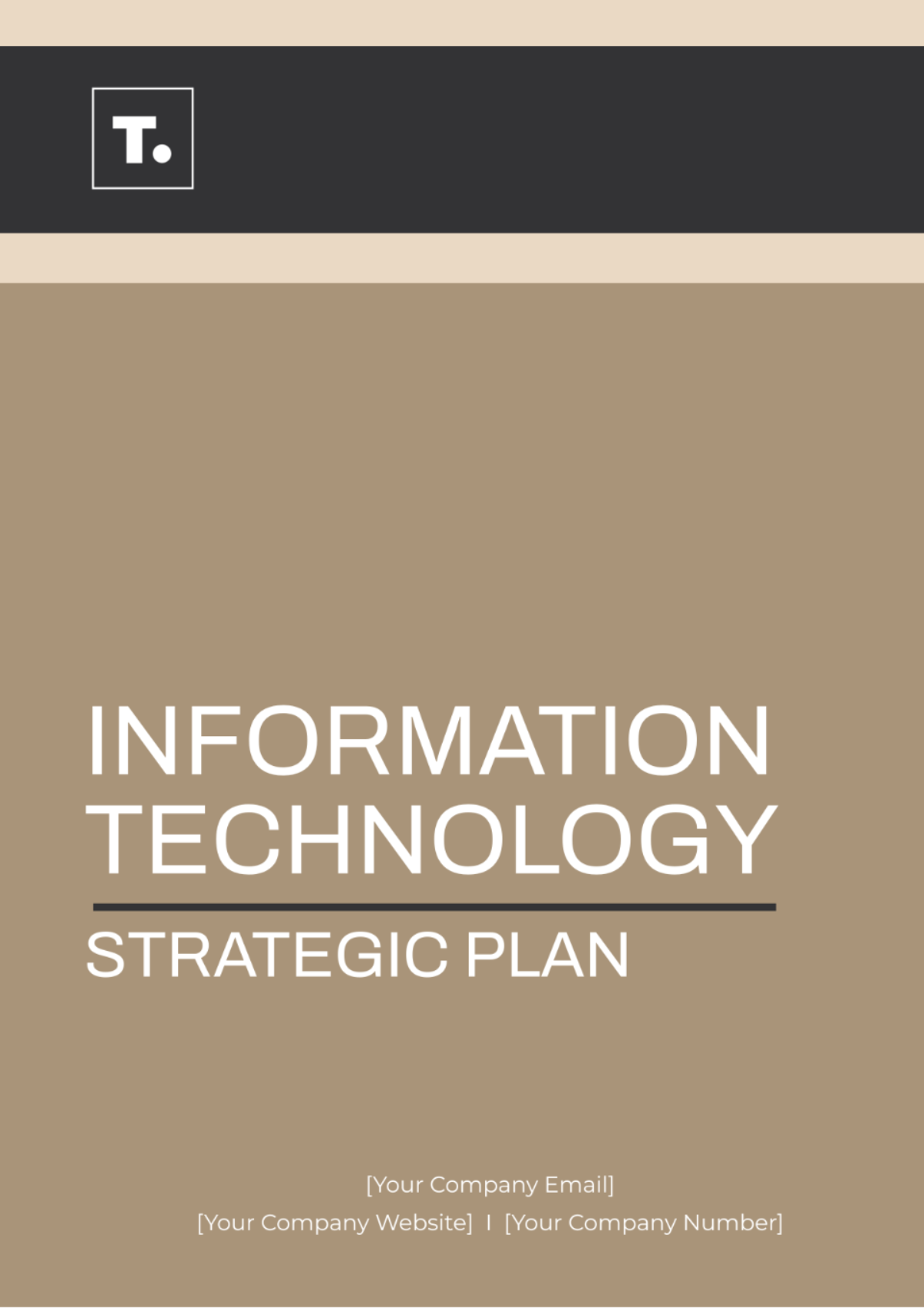Free Information Technology Strategic Plan

Company: | Department: | Prepared by: |
|---|---|---|
[YOUR COMPANY NAME] | [YOUR DEPARTMENT] | [YOUR NAME] |
I. Executive Summary
The Information Technology Strategic Plan (ITSP) outlines our organization's vision for leveraging technology to achieve our strategic goals. It provides a roadmap for how we will enhance our IT infrastructure, streamline processes, and improve services to support our mission of delivering innovative solutions to our customers.
II. Introduction
A. Background
[YOUR COMPANY NAME] is a leading technology company specializing in software development. As technology continues to evolve, we recognize the need to align our IT initiatives with our overall strategic direction.
B. Purpose and Scope
The ITSP will guide our IT investments and initiatives over the next three years, ensuring that they support our strategic objectives and deliver value to our organization.
C. Stakeholders
The ITSP was developed collaboratively with input from key stakeholders across the organization, including executives, department heads, and IT staff.
III. Current State Assessment
A. Overview
Our current IT infrastructure consists of a mix of on-premises and cloud-based systems, supporting our global operations. While we have made significant investments in technology, there are areas for improvement to better support our business operations.
B. SWOT Analysis
Strengths: Skilled IT team, robust cybersecurity measures.
Weaknesses: Legacy systems, lack of integration.
Opportunities: Adoption of emerging technologies, expansion into new markets.
Threats: Cybersecurity threats, rapid technological changes.
C. Technology Trends
Key technology trends impacting our organization include artificial intelligence, cloud computing, and Internet of Things (IoT) technologies.
IV. Vision and Mission
Vision: To be a technology-driven organization that delivers innovative solutions to our customers' challenges.
Mission: Our mission is to leverage technology to enhance efficiency, improve services, and drive growth for [YOUR COMPANY NAME].
V. Goals and Objectives
A. Goals
Enhance IT Security: Implement robust cybersecurity measures to protect against threats.
Improve Operational Efficiency: Streamline business processes through automation and integration.
Enhance Customer Experience: Implement technology solutions to enhance customer engagement and satisfaction.
B. Objectives
Objective 1: Increase cybersecurity awareness training for all employees by 50%.
Objective 2: Reduce manual data entry errors by implementing a new CRM system.
Objective 3: Improve website performance to reduce bounce rates by 20%.
VI. Strategies and Initiatives
A. Strategies
Cybersecurity: Enhance cybersecurity measures to protect against data breaches and cyber threats.
Digital Transformation: Implement digital technologies to streamline operations and improve efficiency.
Customer Engagement: Enhance customer engagement through digital channels and personalized experiences.
B. Initiatives
Initiative | Description | Timeline | Responsible Party |
|---|---|---|---|
Cybersecurity Training | Implement a cybersecurity training program for all employees. | Q3 2064 | IT Security Team |
CRM System Implementation | Roll out a new CRM system to improve data management and customer interactions. | Q1 2065 | IT Department |
Website Optimization | Optimize website performance to improve user experience and engagement. | Q2 2065 | Marketing Department |
VII. Resource Requirements
Budget: The total budget required for implementing the ITSP is estimated to be $1.5 million.
Staffing: Additional staffing resources will be required to support the implementation of the ITSP, including 5 new hires in the IT department.
Technology Investments: Key technology investments required for the ITSP include upgrading our network infrastructure and investing in data analytics tools.
VIII. Risk Management
A. Risks
Security Breaches: Potential for data breaches and cyber attacks.
Implementation Delays: Risks associated with delays in implementing IT initiatives.
Budget Overruns: Risks of exceeding budget allocations for IT projects.
B. Mitigation Strategies
Security Measures: Implement robust cybersecurity measures to protect against data breaches.
Project Management: Use effective project management practices to minimize implementation delays.
Budget Monitoring: Regularly monitor IT project budgets to identify and address potential overruns.
IX. Monitoring and Evaluation
Monitoring Process: Progress against the ITSP will be monitored on a quarterly basis, with key performance indicators (KPIs) tracked to measure progress.
Evaluation Criteria: The success of the ITSP will be evaluated based on its ability to achieve its stated goals and objectives, as well as its impact on the organization's overall performance.
Feedback Mechanism: Feedback from stakeholders will be solicited throughout the implementation of the ITSP to ensure that it remains aligned with organizational goals.
X. Conclusion
The ITSP provides a comprehensive roadmap for how [YOUR COMPANY NAME] will leverage technology to achieve its strategic goals. By aligning our IT initiatives with our overall strategic direction, we will be better positioned to drive growth, improve efficiency, and enhance customer satisfaction.
- 100% Customizable, free editor
- Access 1 Million+ Templates, photo’s & graphics
- Download or share as a template
- Click and replace photos, graphics, text, backgrounds
- Resize, crop, AI write & more
- Access advanced editor
Stay ahead in the ever-evolving IT landscape with the Information Technology Strategic Plan Template from Template.net. Editable in our Ai Editor Tool, this template is fully customizable to align with your IT objectives. Develop a strategic IT roadmap with ease and drive innovation in your organization with this customizable and comprehensive template.





























